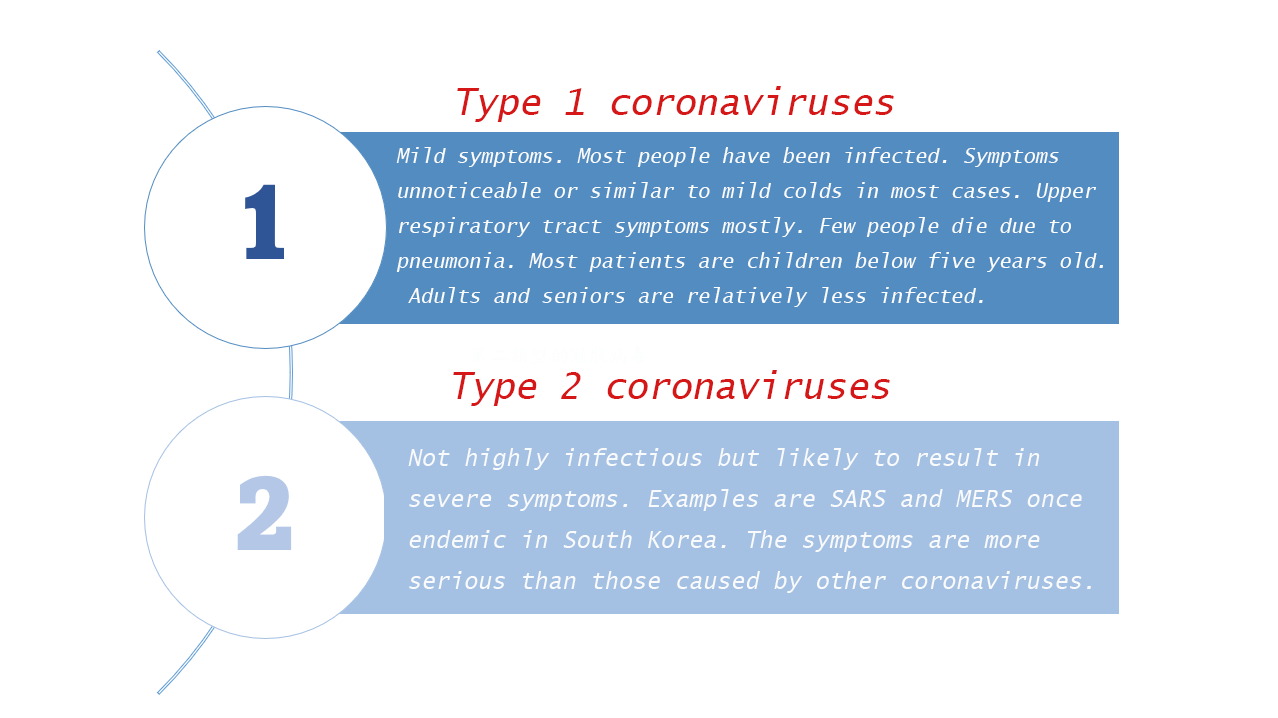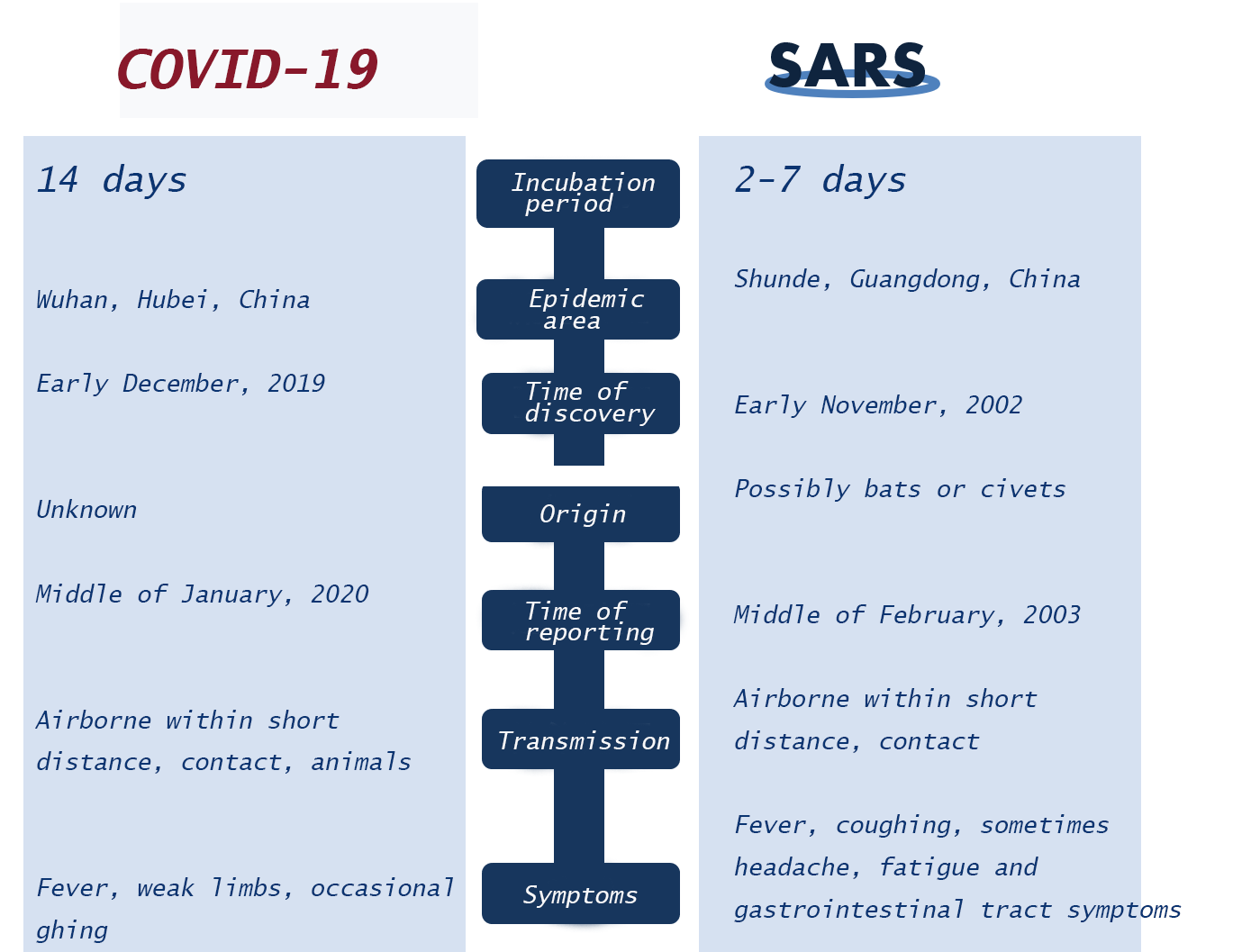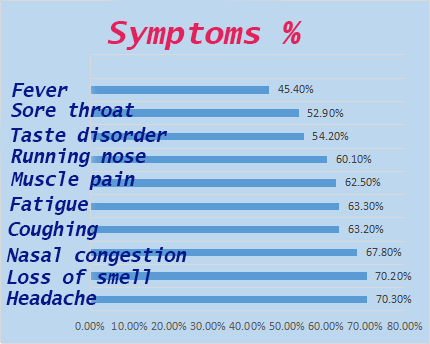
Causes

Transmission

Comparisons

Symptoms

Causes

Transmission

Comparisons

Symptoms
The first batch of confirmed cases were associated with Huanan Seafood Market. On January 22, 2019, Director of the Chinese Center for Disease Control and Prevention said in a press conference that the virus came from wild animals illegally sold in a seafood market in Wuhan. As time went by, experts pieced together complete viral sequences and conducted exhaustive comparisons and studies. The current mainstream scientific theory is that the virus is related to bats and pangolins.
It is indicated that COVID-19 genome sequences are 96% similar with those found on bats in Yunnan and hence it is believed that bats were the natural host of COVID-19. However, the spike (S) proteins of these two viruses are different. Hence, the evolution of the virus is not completely known.
On February 7, South China Agricultural University announced its findings that pangolins may be the intermediate host of COVID-19. The research team sampled the 25 Malaysian pangolins confiscated by the Forest Public Security Bureau of Guangdong Province and the Chinese customs from March 2019 to December 2019. The results on the coronavirus identify similarities with COVID-19. In particular, the receptor-binding domain of the S protein is “virtually the same”. Hence, it is inferred that pangolins may have been the intermediate host and the coronavirus may have evolved due to recombination of the virus found in Yunnan bats.

COVID-19 is a coronavirus. Coronaviruses are a group of RNA viruses that are round in shape under the electron microscope. The name “corona” comes from crown-like spikes of the envelop. The existence of the envelop means it loses infectiousness once the virus is destroyed by alcohol (70-80%), high temperatures (15 minutes under 100℃ or 30 minutes under 56℃) or cleaning products containing chlorine.
The estimates based on public health data suggest that COVID-19 damages lungs less than SARS. COVID-19 is similar with Type 1 coronaviruses and more infectious than SARS. This is the reason why the pandemic continues to escalate. Coronaviruses can be divided into two types based on severity.


1. Avoid hanging out for fun or venues with heavy flows of people. This increases the likelihood of infection because the virus is transmitted airborne.
2. Put on a mask when going out. Carry a hand sanitizer at all times.
3. Sleep six to eight hours per day. Exercise regularly. Maintain a healthy diet. Appropriate supplement of Vitamin C appropriately enhances physical health and the immune system.
The first batch of confirmed cases were associated with Huanan Seafood Market. On January 22, 2019, Director of the Chinese Center for Disease Control and Prevention said in a press conference that the virus came from wild animals illegally sold in a seafood market in Wuhan. As time went by, experts pieced together complete viral sequences and conducted exhaustive comparisons and studies. The current mainstream scientific theory is that the virus is related to bats and pangolins.
It is indicated that COVID-19 genome sequences are 96% similar with those found on bats in Yunnan and hence it is believed that bats were the natural host of COVID-19. However, the spike (S) proteins of these two viruses are different. Hence, the evolution of the virus is not completely known.
On February 7, South China Agricultural University announced its findings that pangolins may be the intermediate host of COVID-19. The research team sampled the 25 Malaysian pangolins confiscated by the Forest Public Security Bureau of Guangdong Province and the Chinese customs from March 2019 to December 2019. The results on the coronavirus identify similarities with COVID-19. In particular, the receptor-binding domain of the S protein is “virtually the same”. Hence, it is inferred that pangolins may have been the intermediate host and the coronavirus may have evolved due to recombination of the virus found in Yunnan bats.

COVID-19 is a coronavirus. Coronaviruses are a group of RNA viruses that are round in shape under the electron microscope. The name “corona” comes from crown-like spikes of the envelop. The existence of the envelop means it loses infectiousness once the virus is destroyed by alcohol (70-80%), high temperatures (15 minutes under 100℃ or 30 minutes under 56℃) or cleaning products containing chlorine.
The estimates based on public health data suggest that COVID-19 damages lungs less than SARS. COVID-19 is similar with Type 1 coronaviruses and more infectious than SARS. This is the reason why the pandemic continues to escalate. Coronaviruses can be divided into two types based on severity.


1. Avoid hanging out for fun or venues with heavy flows of people. This increases the likelihood of infection because the virus is transmitted airborne.
2. Put on a mask when going out. Carry a hand sanitizer at all times.
3. Sleep six to eight hours per day. Exercise regularly. Maintain a healthy diet. Appropriate supplement of Vitamin C appropriately enhances physical health and the immune system.
A new pneumonia broke out in Huanan Seafood Wholesale Market, a market selling seafood and game in Wuhan, Hubei. A number of citizens who worked in the market or have been to the market were infected.
The WHO (World Health Organization) announced the discovery of a new virus from the coronavirus family. Other members in this family included SARS and common cold coronaviruses. The WHO named this new virus “Novel coronavirus, 2019-nCoV”.
The first COVID-19 confirmed case outside China was in Thailand. This female patient came from Wuhan.
The first confirmed case in Taiwan was a 55-year female Taiwanese businesswoman who worked in Wuhan. She was coughing and running a fever and hence sent to the hospital immediately from the airplane back to Taiwan. In wake of the first confirmed case onshore, Taiwan’s Central Epidemic Command Center (CECC) raised the alert level from Level 3 to Level 2.
Another three cases were confirmed in Taiwan. The sixth and the seventh infections were both Chinese women above 70 years old and traveling from Wuhan to Taiwan for self-guided tours. The eighth infection was the first domestic case in Taiwan. This was an over-50-year old male, the husband of the fifth confirmed case. It was the first domestic case without a travel history to Wuhan.
The WHO declared the COVID-19 was a public health emergency of international concern.
For the first time, the school opening day was postponed in Taiwan due to COVID-19. This was called “Pandemic Prevention and Homecare Holiday”. All the senior high schools and vocational schools and below delayed the start of the semester for two weeks, from February 11, 2020 to February 25, 2020. The next summer vacation would be reduced by two weeks.
Director-General of the WHO, Dr. Tedros Adhanom Ghebreyesus, announced in a press conference that Wuhan coronavirus was renamed “COVID-19”. “CO” stands for corona, VI for virus and D for disease, 19 for the year.
The first death was reported in Taiwan. A 60-year-old male living in central Taiwan and with Hepatitis B and diabetes passed away in the evening of February 15 due to COVID-19 and the complication of sepsis.
The most updated disease prevention rules came into force on December 1, 2020: enhanced border quarantine, hospital reporting and community measures. Mask wearing and social distancing remained mandatory at eight major types of venues.
The Operational Principles for R.O.C (Taiwanese) Airlines Air Crewmembers to Implement Health Control Measures for Epidemic Prevention require airliners to strengthen accommodation control, in-flight prevention, dispatch management and inspection mechanisms.
Taoyuan General Hospital reported two infections of the South African variant. For the first time, the CECC established a command station at Taoyuan General Hospital.
The first confirmed cases of doctors and nurses were reported
Another death in Taiwan after 263 days
Taoyuan General Hospital back to normal operation
Start of AstraZeneca vaccination
Alert raised to Level 2
Closure of senior high schools and vocational schools and below in New Taipei City and Taipei City
Closure of all schools, kindergartens, after-school care classes and cram schools
Implementation of QR Code tracking system and alert level raised to Level 3
First calibration and addition of confirmed domestic cases by CECC.
Deaths exceeding 73, the death toll of SARS.
Alert level reduced by CECC to Level 2

At the end of December 2002, the Chinese internet chatters indicted a strange disease spreading in Guangdong. It was said that all patients suffered a fever and coughing before death due to rapid deterioration and respiratory failure. This strange disease came from an unknown source and spread through unspecific routes. The causes of quick deaths were elusive. The Chinese government never confirmed the endemic in the beginning until things spiraled out of control. It was not until February 11, 2003 that the first report to the WHO was filed. The outbreak of the acute upper respiratory disease and the deterioration into atypical pneumonia in Guangdong area caused 305 infections, including five deaths. One third of the infected were medical personnel.
The typical progression is a sudden fever after an incubation period of two to seven days (mostly four to five days and up to ten days). Some patients had chills or muscle pains. Many experienced mild diarrhea or loose stools. At this juncture, patients usually suffered mild coughing or did not cough at all. Coughing gradually developed three to five days later. Partial pneumonia began to show on the chest X ray five to seven days later and patients might start to become short of breath or have difficulty in breathing. In general, about 20% of the SARS patients reporting pneumonia progressed to respiratory failure. The death rate of those who have respiratory failure is 50%. In other words, the mortality rate of SARS pneumonia is approximately 10%. This could be significantly higher for seniors or patients with underlying diseases.
Avoid traveling to Guangdong, Hong Kong, Singapore or China. Avoid going to public venues. Take precautions with better personal hygiene. Cover sneezing, coughing and nose blowing with tissue paper and wash hands afterwards. Enhance immunity with a balanced diet and appropriate exercise and rest. Keep good ventilation at home to avoid the virus from concentrating indoors. In case of a fever or unusual respiratory symptoms, put on a mask and go to the hospital immediately. Do not use unspecified medications or treatments.
COVID-19 invaded Taiwan a long while ago. Wear a mask when going out to protect yourself. Be careful with the following symptoms as they may not be the common cold!

(1).No fever but heartrate >100 beats per minute
(2).Shortage of breath or difficulty in breathing (respiratory rate of >30 breaths per second or blood oxygen level ≦94%)
(3).Bluish skin, lips and nails
(4).Continuous chest pain and chest tightness
(5).Unconsciousness or epilepsy
(6).Unable to eat, drink water or take medicine
(7).No or reduced urine for 24 hours. Dehydration among children due to inability to drink water. (sunken eyes, tear deficiency, dry mouth and tongue)
(8).Systolic blood pressure <90mmHg
An article from the journal The Lancet explores what lies ahead for confirmed infections by tracking 1,733 patients who have left the hospital for six months. The main long-haul COVID symptoms include fatigue or muscle pains (63%), sleep disorder (26%) and anxiety or depression (23%). Other symptoms mentioned are pulmonary fibrosis, brain fog and shortage of breath when exercising.
It is advised to go to a hospital for examination and timely treatment in case of the above symptoms. Please call the Center for Disease Control, Ministry of Health, Executive Yuan at 1922 for any questions about infectious diseases.